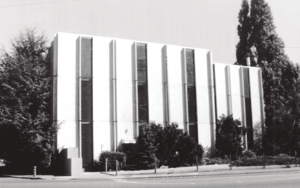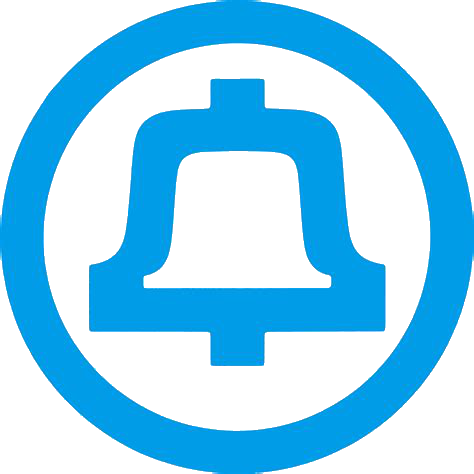CMS:Connections Museum
Former names | Herbert H. Warrick Jr. Museum of Communications, Vintage Telephone Equipment Museum |
|---|---|
| Established | 1989 |
| Location | Georgetown, Seattle, Washington |
| Founder | Don Ostrand and Herb Warrick |
| Website | www |

| Part of the |
| Connections Museum |
|---|
The Connections Museum is a communications technology history museum in Georgetown, Seattle. It is owned and managed by the Telecommunications History Group. The museum was established in 1986 by former telecom employees. Although there are some other telephone museums in the United States, the Connections Museum is the only one to feature a large collection of working electromechanical central-office equipment—including the famous Panel Office from the early 1920s.
History
The Connections Museum was established in Seattle in 1986 as the Vintage Telephone Equipment Museum. Originally conceived as one of three such museums, the Seattle Museum was the only one to survive past the initial planning stage.
The local Bell operating company in Seattle had been the Pacific Northwest Bell Telephone Company (PNB) since 1961. In January 1984, as part of the court-ordered breakup of AT&T, PNB joined with Mountain Bell and Northwestern Bell to become the new Regional Bell Operating Company (RBOC, aka. Baby Bell) named US West - though it continued to operate locally under the Pacific Northwest Bell brand until 1991.
US West was merged with Qwest Communications in June 2000 and began using the name Qwest. In April 2011, Qwest was purchased by Louisiana-based CenturyTel and renamed CenturyLink. CenturyLink merged with Level 3 Communications in 2017, and the combination changed its name to Lumen in 2020. All of these companies have provided floor space, electric power, and some in-kind contributions to the museum though they have never provided direct funding for the museum's operations.
The museum was originally created, built, and staffed by long-service and retired Pacific Northwest Bell company employees who were mostly members of the Charles B. Hopkins No. 30 chapter of the Telephone Pioneers of America.
Early Timeline
In a November 1984 memorandum to Pacific Northwest Bell vice presidents, Herb Warrick (whose title was Director, Network Engineering), advocated for creating three Telephone Pioneer museums in Seattle, Spokane, and Portland. Warrick explained that the timing was ideal because:
- By the year 1990, all remaining electromechanical telephone switching equipment was expected to be retired.
- The newer electronics switching systems required much less space, therefore opening potential museum space in the central offices.
- Disconnecting the electromechanical offices would make components of Step, Panel, and both No. 1 and No. 5 Crossbar equipment available for the proposed museums.
The museums could be operated by the local Telephone Pioneer Chapters. Pacific Northwest Bell would provide the building space, the switch frames, frame erection, and interconnecting cable. The Telephone Pioneers would design the layout, install the equipment, and do all subsequent maintenance.
In a 1985 memorandum to PNB Director E. G. Barneich, M. D. Lindeman recommended that the Seattle Museum be located at the Duwamish Central Office (7000 East Marginal Way South) on the third floor with estimated construction costs of $25,000. The Lakeview Central Office was also considered but ultimately not chosen.
Herb Warrick promoted the idea of a museum in the September 1986 issue of the Pioneer Herald, the monthly newsletter of the Charles B. Hopkins No. 30 chapter. Warrick invited all members of the Chapter to become involved and to attend an inaugural luncheon.
At 11:30 am on September 3rd 1986 a buffet lunch was served in the mostly empty space on the third floor of the Duwamish Central Office to officially inaugurate work on the Vintage Telephone Equipment Museum in Seattle.
From 1986 to 1988 volunteers from the Telephone Pioneers, occasionally supplemented by paid Western Electric and Pacific Northwest Bell employees, constructed the exhibits and supporting infrastructure for the museum, including moving and reconnecting all of the electromechanical central office switching equipment. The first machine to be installed in the museum was the No. 5 Crossbar.
Don Ostrand (Seattle Telephone Pioneer Council, Pioneer Museum Committee) reported on the progress of the newly established Seattle Museum in the February 1988 issue of the Pioneer Herald. He reported that The Panel and Crossbar offices were installed, the Step-by-Step equipment was in the building, and the assembly work was ongoing. Opening was scheduled for the Fall of 1988.
The first official guided tour of the museum was held on the weekend of July 22nd, 1988, for past presidents of Pacific Northwest Bell, hosted by the Pioneers and PNB.
Vintage Telephone Equipment Museum
From 1988 to 2002 the museum operated as the Vintage Telephone Equipment Museum, open Tuesdays from 8:30 am to 2:30 pm, in association the Telephone Pioneers. The museum was staffed mostly— but not exclusively—by retired telephone company employees. Work on adding new exhibits and equipment continued throughout that time. Don Ostrand was given the title of Curator, and together with Herb Warrick provided the effective management for the museum.
Meanwhile in Denver in 1992, a new 501(c)3 nonprofit corporation known as The Telecommunications History Group Inc. (THG) was formed and registered with the State of Colorado. The main founder was Herbert J. Hackenberg, who was the Corporate Historian for The Mountain States Telephone and Telegraph Company (Mountain Bell).
THG's purpose stated in its articles of incorporation is:
The corporation is organized exclusively for charitable and educational purposes which include the restoration of historical equipment and places, collecting and archiving material important to the telecommunication industry; production and archiving of oral histories; expansion and maintenance of a telecommunications museum; conducting educational tours, providing history presentations and exhibits; assembly and maintenance of a reference library and a loan program for photographs and equipment; building a regional inventory (data base) of historic equipment. photographs and other material; recruit, train and organize a staff of volunteers.
In 1999 US West told the museum that to accommodate the installation of a new No. 5 Electronic Switching System (5ESS), the museum would have to vacate the Duwamish Central Office. Museum curator Don Ostrand worked with US West Building and Engineering Departments to forestall the move. A compromise was reached where the museum surrendered about 2,500 square feet on the second floor (where the 5ESS is now). The pressure on the museum was also relieved by the "dot-com crash” of March 2000 which greatly diminished the demand for co- location space in central offices.
In 2002 retired US West Washington Vice-President Scott McClellan joined the THG board of directors, where he served until 2022.
Museum of Communications
In 2003 Qwest ended their financial support for the Pioneers, and in turn The Telephone Pioneers ended their official support of the museum. It was renamed "The Museum of Communications” and became part of the Telecommunications History Group (THG). Herb Warrick and Don Ostrand also joined the THG board. In March of 2008 Museum volunteer (since 1999) David Dintenfass was appointed Assistant Curator.
On Oct 2, 2012, Herb Warrick passed away after a long illness.
In January 2014 Don Ostrand passed away unexpectedly, and David Dintenfass took over as museum curator.
In 2017 the current structure where the museum is overseen by an Advisory Group was put in place.
Layout
The Connections Museum has two floors, each with various switching machine installations and exhibits.
Third Floor
Tours start on the third floor, which has switches and exhibits from the early 1800s to the 1950s. It includes the following:
- Early Telephone History Display
- Strowger Step-by-Step (SXS) Switch
- Panel Switch
- CX 100 Switch
- Number One Crossbar Switch (1XB)
- Number Five Crossbar Switch (5XB)
- AT&T Long Lines Microwave Equipment
- Teletype Collection
- Railroad Signaling Display
- Retro Computers Display
- Western Electric Appliances Collection
- Clear Cubes Display
- Power Board
- 803C Ringing and Tone Plant
Second Floor
Tours continue on the second floor, which has switches and exhibits mostly from the 1960s to the present, in addition to phones from all eras. It includes the following:
- Private Branch Exchange (PBX) Collection
- Number Three Electronic Switching System (3ESS)
- Outside Plant Display
- Hewitt Room
- Mobile Phone Display
- DMS-10 (Digital Multiplexing System)
- Design Line Phone Collection
- Payphone Collection
- Key System Collection
- Private Automatic Branch Exchange (PABX) Collection
